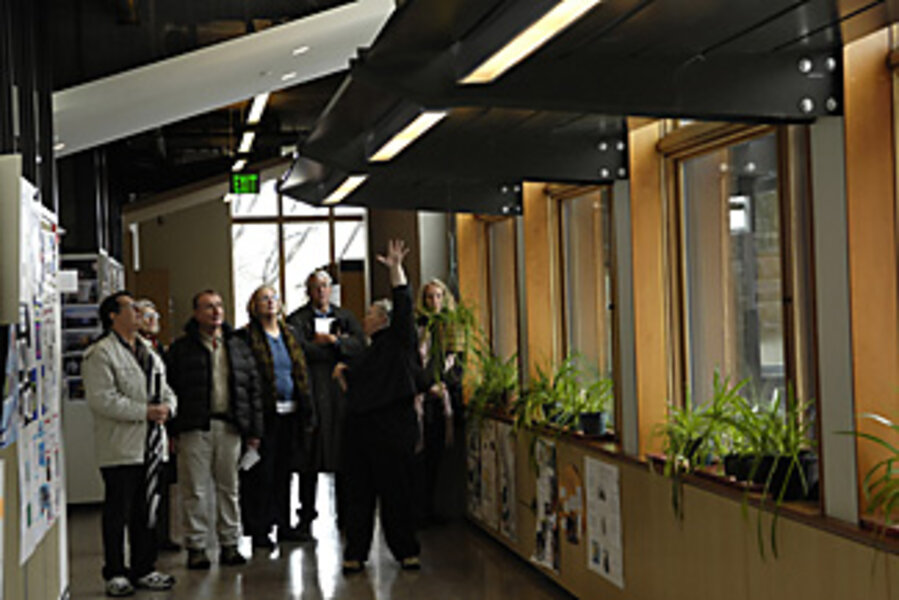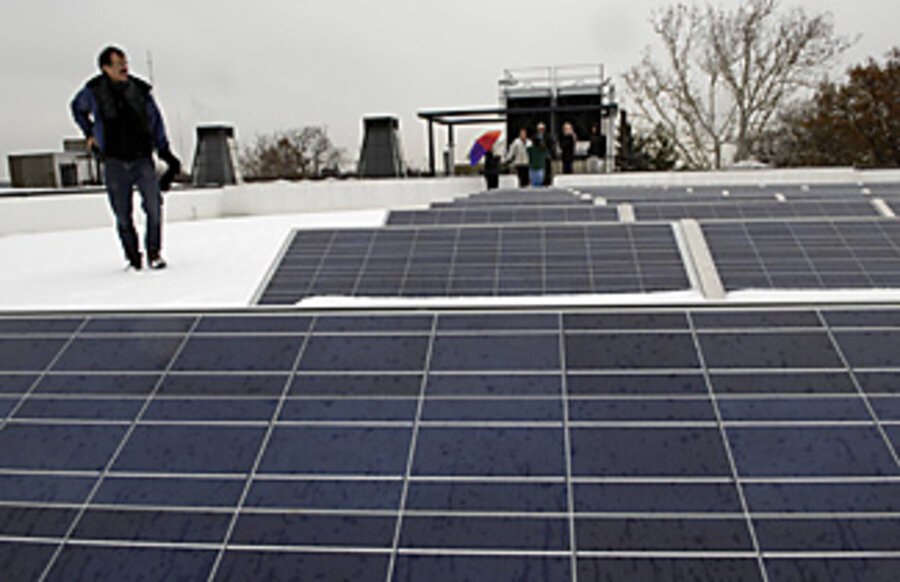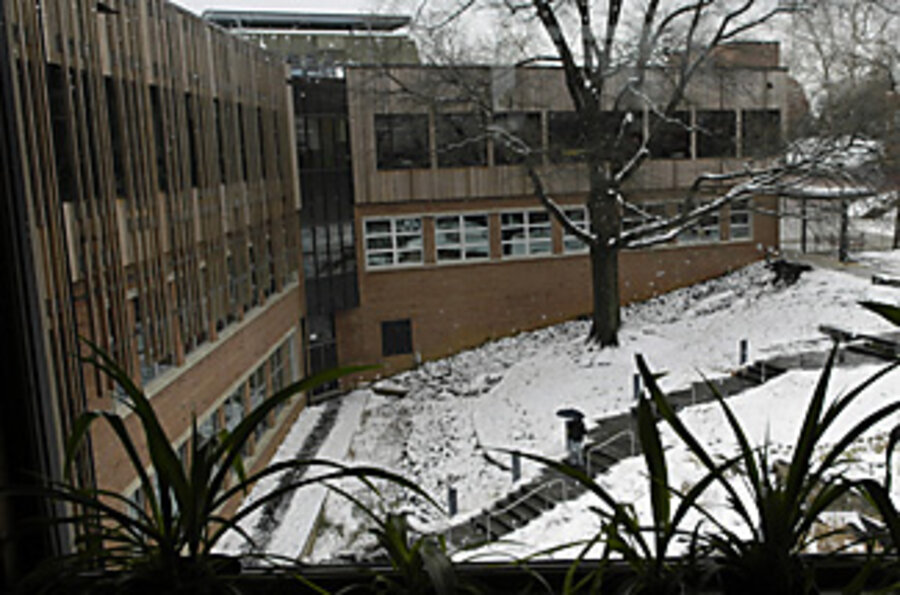Earth-friendly school
Loading...
What has light, fresh air, and is a great place to learn?
An ecofriendly middle school.
At Sidwell Friends Middle School in Washington, D.C., one of the newest teachers on campus this year is a building. From top to bottom it's energy efficient, environmentally friendly, and an inviting place to learn everything from science to singing.
It all started when the school needed more classroom space. Instead of tearing down the existing building, a construction crew brought in a bulldozer to clear out the interior, and an L-shaped addition went up beside it. The new, U-shaped building is filled with earth-friendly features, but the spacious rooms with huge windows are the first things you notice.
"The extra natural light in the classrooms really keeps you awake and enjoying the day," says Isabel Dorval, a ninth-grader at Sidwell.
Walkways made of what?
The architects chose natural, recycled, and renewable materials wherever possible. Most of these could be used with minimal impact on the environment. Doors were made with a veneer of bamboo (a fast-growing grass), bulletin boards with cork (which can be harvested without cutting down trees), and cabinets from wheatboard (which is made of wheat straw – the part of the plant that's left over after the grain is harvested).
Old materials were also reused in new ways. Bleachers from another school were used to make the window trim. Wood for walkways came from a pier in Baltimore. The "skin" on the outside of the building was made with wood from wine casks. The sun is turning the boards a beautiful silvery gray.
On the roof, tall, glass-sided chimneys vent warm air, creating a current that pulls cool, fresh air through the building's north-facing windows. Sixth-graders tend rooftop beds of herbs that they cut and bring to the cafeteria. Native plants help insulate the building and filter rain-water that flows through downspouts to the landscaped area below.
Recycled water
Instead of planting a grass lawn, the school created a terraced wetland area and pond by the main entrance. The area has become a hands-on science lab where students take water samples, identify microorganisms, and study wildlife.
Another important purpose of the wetlands is to treat the water from sinks and toilets.
Waste goes into an underground tank, where tiny organisms begin to break it down. Then it filters through plants, rock, and sand in the wetland and back through the building to be used in sinks and toilets and to cool machinery. Fresh water in drinking fountains comes from the city supply. The school uses about 90 percent less water than a traditionally built school of the same size.
"My favorite place is probably the benches outside by the wetlands," says Isabel. "It feels like it's a little habitat out there because you're enclosed on three sides by the building. There's a mural that illustrates the sedimentation process. That brings awareness of what's happening right in front of you. That's very neat."
Lessons from the building
Mechanical controls, vents, and pipes in plain view make it easier to understand how everything works. Along the wide, open hallways filled with natural light, wind chimes in vents signal when fresh air is being taken into the building. In science class, everyone reads the monitors to note how temperature and levels of carbon dioxide change throughout the day.
The building is a great place for environmental detective work, too.
"I asked the students to look around and tell me where paper was used to make something in the classroom," says Jennifer Mitchell, who teaches fifth-grade science. "One student looked up and said it was in the ceiling tiles, and he was right. The ceiling tiles are made from recycled newspaper."
Let the sunshine in
The building's greatest energy saving is in its use of light. The large windows have light shelves above that reflect natural light farther into rooms without letting in heat from the sun. On the south side of the building, where the sun is strongest, horizontal screens shade classrooms from glare. On the east and west sides, vertical screens shade windows when the sun is low.
Some days, the overhead fluorescent lights never need to be turned on. That saves not only the energy it takes to keep lights on; it also saves the energy it takes to cool down the building from all the heat that lights can generate. The result is that such an efficient building has helped the school cut its energy use by 60 percent.
All about the environment
From the day the doors to the new building opened, changes have echoed through Sidwell Friends School. The cafeteria has been serving more organic and locally grown food.
There's an environmental club called ECO, and students have begun to teach their parents about more energy-efficient ways of doing things at home.
"We have such an opportunity here," says Ms. Mitchell. "As you learn about the building, it makes you think how much sense it makes to do things this way."
Isabel likes science very much and says the new building has made science even more interesting for her.
"It went from little in-class experiments to really learning about the school itself as an experiment," she says. "I think I can speak for our whole grade, saying that suddenly you just understood your environment and how you affect it."








